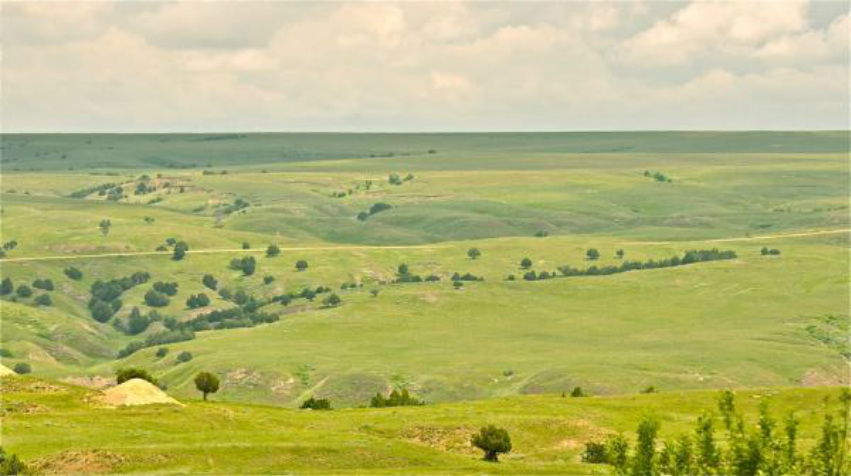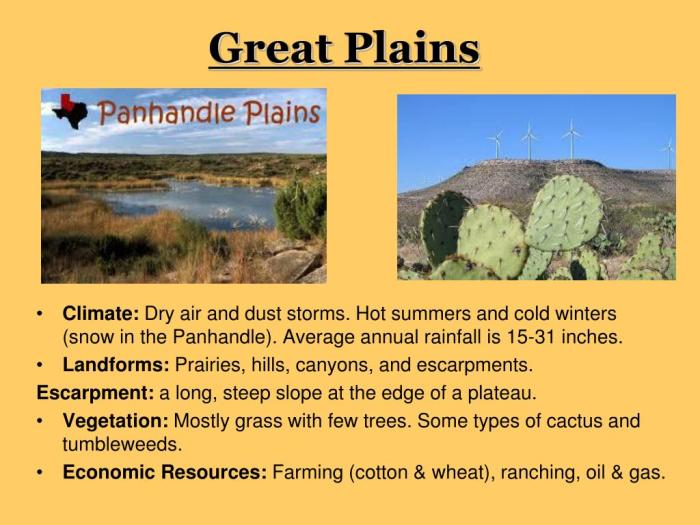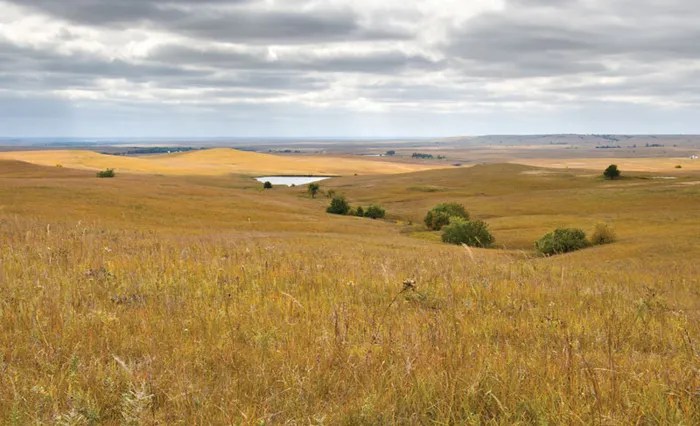Landforms in the Great Plains of Texas present a captivating tapestry of geological wonders, shaping the region’s landscape and influencing human activities throughout history. From the rolling hills of the Edwards Plateau to the vast expanse of the Gulf Coastal Plain, each landform holds unique characteristics that contribute to the diverse and dynamic ecosystem of this vast region.
The Great Plains of Texas, a vast expanse stretching from the Gulf of Mexico to the Rocky Mountains, encompass a diverse array of landforms that have been shaped by millions of years of geological processes. These landforms, ranging from rolling hills to rugged canyons, have played a significant role in shaping the region’s history, culture, and economy.
Physical Geography of the Great Plains in Texas: Landforms In The Great Plains Of Texas

The Great Plains in Texas encompass a vast and diverse region, stretching from the Gulf of Mexico in the east to the Rocky Mountains in the west. The topography of the Great Plains is characterized by rolling hills, plateaus, and escarpments, with elevations ranging from sea level to over 4,000 feet.
The region is drained by several major rivers, including the Red River, the Brazos River, and the Colorado River. The Great Plains of Texas were formed by a combination of geological processes, including erosion, deposition, and tectonic activity.
Major Landforms in the Great Plains of Texas
The Great Plains of Texas are home to a variety of landforms, each with its own unique characteristics. The Edwards Plateau is a large, uplifted region in the central part of the state, characterized by limestone hills and canyons. The Llano Uplift is a smaller, more rugged uplift located in the central part of the state, known for its granite domes and steep slopes.
The Gulf Coastal Plain is a low-lying region in the eastern part of the state, characterized by sandy beaches, marshes, and swamps.
| Landform | Size | Elevation | Geological Composition |
|---|---|---|---|
| Edwards Plateau | Approximately 25,000 square miles | 1,000 to 2,000 feet | Limestone |
| Llano Uplift | Approximately 1,000 square miles | 1,000 to 2,500 feet | Granite |
| Gulf Coastal Plain | Approximately 50,000 square miles | Sea level to 1,000 feet | Sandstone, clay, and limestone |
Impact of Landforms on Human Activities
The landforms of the Great Plains of Texas have had a significant impact on human activities in the region. The rolling hills and plateaus have provided suitable land for agriculture, while the rivers have provided a source of water for irrigation and transportation.
The escarpments and canyons have created natural barriers that have influenced the development of transportation routes and settlement patterns. The unique characteristics of each landform have also shaped the cultural and historical landscape of the Great Plains of Texas.
Conservation and Management of Landforms
The landforms of the Great Plains of Texas are a valuable resource that must be conserved and managed for future generations. Threats to landforms include erosion, pollution, and development. Government agencies and conservation organizations are working to protect landforms in the Great Plains of Texas by implementing conservation measures and promoting sustainable land management practices.
Frequently Asked Questions
What is the largest landform in the Great Plains of Texas?
The Gulf Coastal Plain is the largest landform in the Great Plains of Texas, covering over 100,000 square miles.
What is the highest point in the Great Plains of Texas?
Guadalupe Peak, located in the Guadalupe Mountains National Park, is the highest point in the Great Plains of Texas, with an elevation of 8,751 feet.
What is the most common type of landform in the Great Plains of Texas?
Rolling hills are the most common type of landform in the Great Plains of Texas, covering over 50% of the region.

